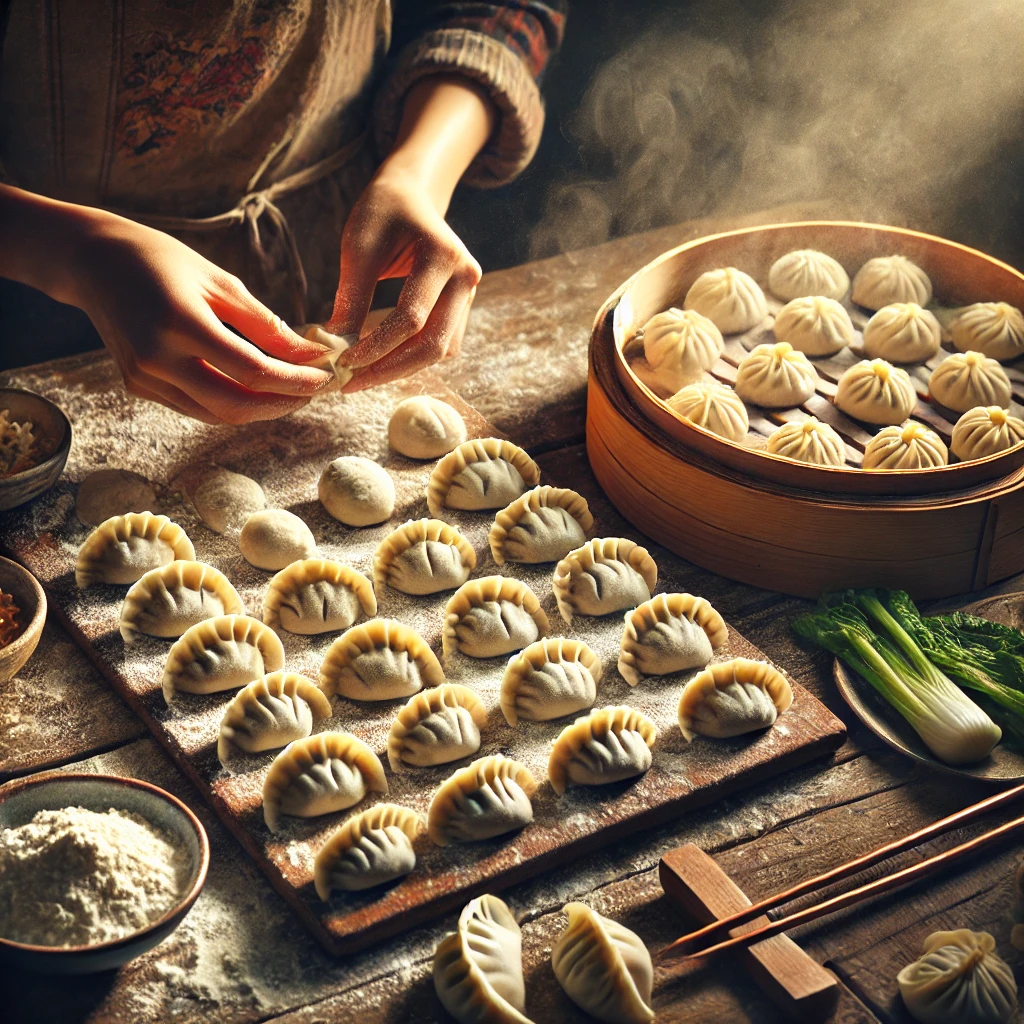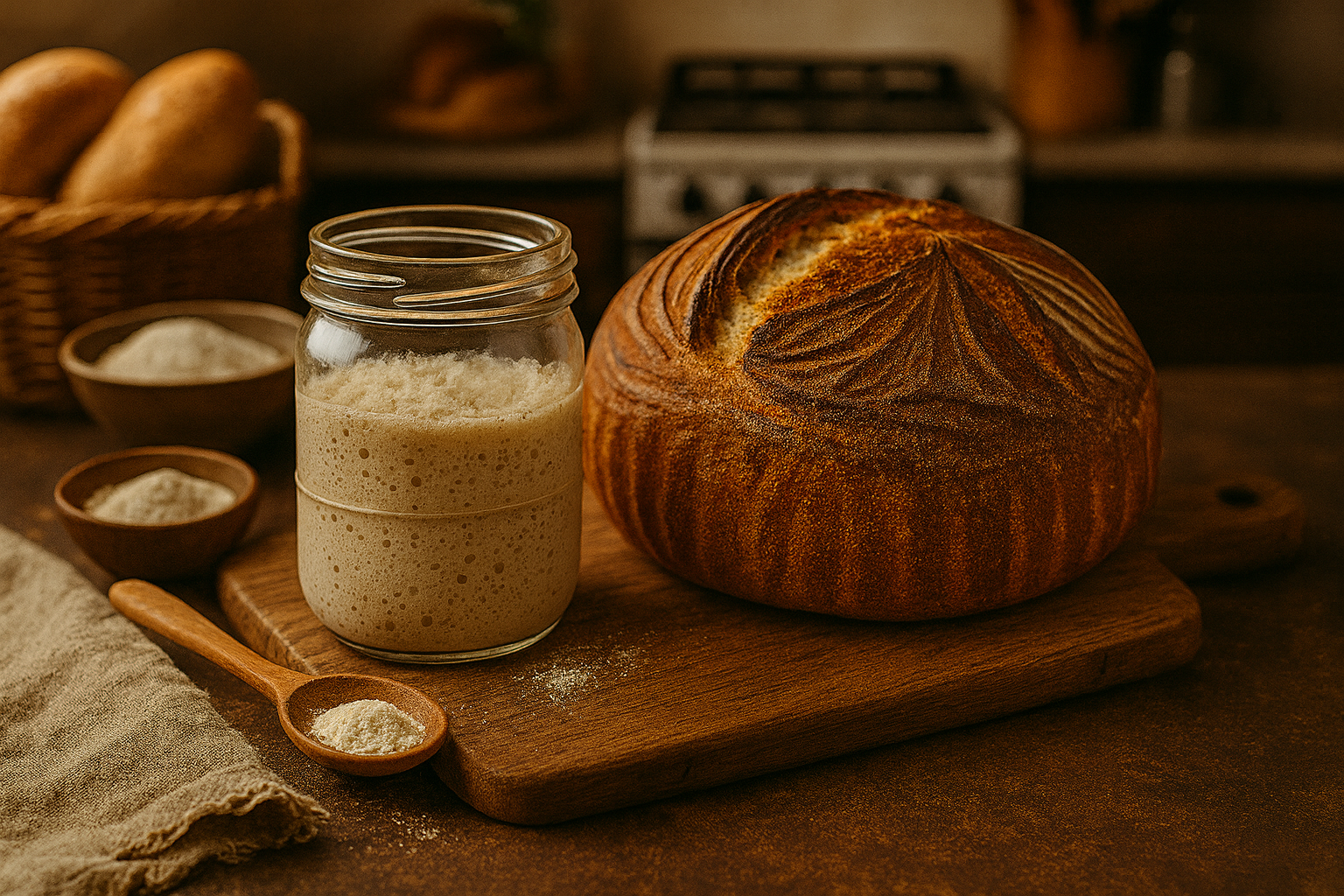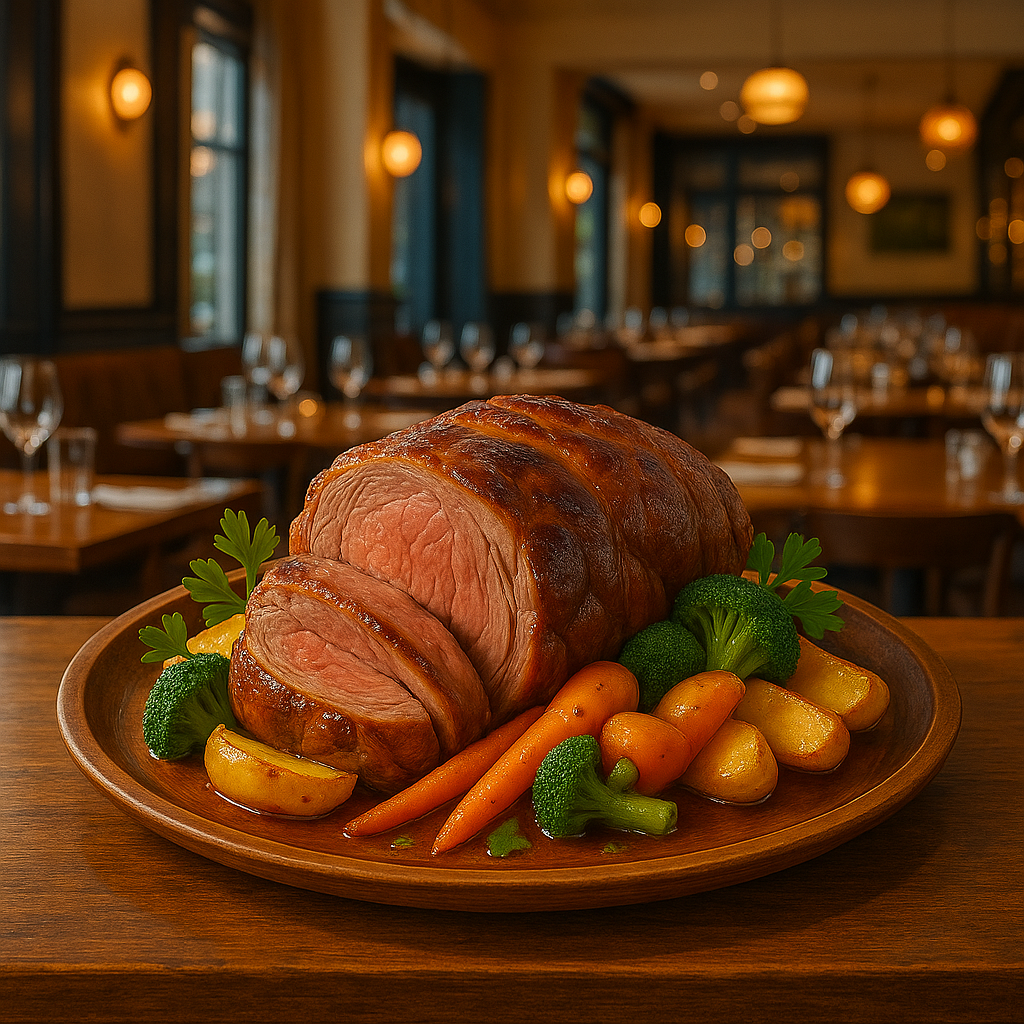Table of Contents
Introduction to Chinese Dumplings
Chinese dumplings, known as “jiaozi,” hold a significant place in the culinary landscape of China, transcending mere sustenance to embody cultural heritage and family traditions. Historically, dumplings can be traced back over 1,800 years to the Han Dynasty, where they were originally created as a remedy for various ailments. Over time, they evolved into a popular dish symbolizing wealth and prosperity, primarily due to their resemblance to ancient Chinese gold ingots.
Regional variations abound across the vast expanse of China, with each area contributing unique ingredients and preparation methods that reflect local customs and preferences. For example, northern regions often favor thicker dough and hearty fillings, typically made from pork and seasonal vegetables, while southern areas might present lighter, steamed dumplings with a variety of seafood or vegetarian options. Such diversity illustrates how Chinese dumplings have seamlessly integrated into regional culinary identities, celebrating local flavors and traditions.
Dumplings are also deeply woven into the fabric of family gatherings and festivals. They are a staple during the Lunar New Year, where families typically come together to prepare and consume them, symbolizing unity and the appetite for prosperity in the coming year. Additionally, occasions such as weddings, birthdays, and holidays often feature this revered dish, highlighting its role in connecting loved ones and honoring cultural practices.
As one explores the art of making authentic Chinese dumplings, it becomes evident that this dish is much more than a meal. It represents a rich historical narrative and serves as a conduit for fostering togetherness and joy among family and friends.

Ingredients for Authentic Dumplings
To successfully create authentic Chinese dumplings, it is imperative to use the right ingredients. The components can be broadly categorized into two main groups: dough and filling ingredients. Each plays a vital role in ensuring the dumplings achieve their traditional texture and flavor.
The dough is the foundation of any dumpling, and its primary ingredients include all-purpose flour and water. For a softer texture, some recipes call for a combination of flour and wheat starch. A pinch of salt can be added to enhance the flavor. When making the dough, it is essential to knead it properly and allow it to rest, as this contributes to its elasticity, making it easier to work with later on. High-quality, unbleached flour is recommended for achieving the desired results. If you require an alternative, gluten-free dumpling dough can be made using rice flour or tapioca starch, though this may alter the traditional taste and texture.
Filling ingredients are crucial for imparting flavor to the dumplings. Traditional fillings often comprise finely chopped meat, such as pork, chicken, or shrimp, mixed with vegetables like napa cabbage, scallions, or mushrooms. Seasoning, such as soy sauce, sesame oil, and ginger, should also be incorporated to enhance the taste. When sourcing ingredients, opting for fresh produce and high-quality meats will yield the most flavorful fillings. For a vegetarian alternative, ingredients like tofu, mushrooms, and various vegetables can be used, ensuring that they are well-seasoned to maintain authenticity. Additionally, omitting certain ingredients may be suitable for dietary restrictions; however, one should be cautious to preserve the overall flavor profile.
Understanding these essential components not only aids in the preparation of authentic dumplings but also enriches the cooking experience. Dedicating attention to sourcing quality ingredients contributes immensely to the overall success of this culinary endeavor.
Making the Perfect Dumpling Dough
Crafting the perfect dumpling dough is a fundamental step in ensuring your Chinese dumplings turn out delicious and authentic. The choice of flour directly impacts texture; for traditional dumpling dough, it is recommended to use all-purpose flour due to its balanced gluten content. In some recipes, you may also find a combination of all-purpose flour with a little cake flour to create a slightly softer finished product. The typical ratio is around two cups of flour to approximately three-quarters of a cup of water, but this can vary based on the humidity and the specific flour you utilize.
To begin the process, start by measuring the flour accurately and placing it in a large mixing bowl. Create a well in the center and gradually pour in the water while mixing with chopsticks or a fork. This allows for even hydration of the flour. Once the ingredients are combined into a shaggy mass, it’s time to knead. Transfer the dough to a floured surface and knead it for around 8 to 10 minutes until it becomes smooth and elastic. This step is essential, as proper kneading develops the gluten and directly affects the dumpling’s final texture.
After kneading, cover the dough with a damp cloth or plastic wrap and let it rest for at least 30 minutes to allow the gluten to relax. This resting period is crucial for achieving a pliable dough that’s easy to roll out and shape. Once the resting time is over, divide the dough into smaller portions, and roll each portion into a thin circle, ready to be filled with your choice of dumpling filling. Precision in these steps will yield a tender dumpling skin that beautifully complements any filling, enhancing the overall dumpling experience.
Crafting Delicious Dumpling Fillings
Creating authentic dumpling fillings is an essential aspect of the dumpling-making process, providing a foundation for diverse flavor profiles that appeal to various palates. Traditional fillings can be categorized into three main types: meat, vegetarian, and seafood. Each variation has its distinctive taste and texture, allowing for a delightful culinary experience.
Starting with meat fillings, ground pork is a popular choice, often mixed with finely chopped vegetables such as green onions, ginger, and garlic to enhance the flavor. A classic recipe includes 500 grams of ground pork, 100 grams of finely chopped napa cabbage, 2 tablespoons of soy sauce, 1 tablespoon of sesame oil, and salt and pepper to taste. Combining these ingredients results in a rich, savory filling that pairs perfectly with the dumpling’s delicate wrapper.
For those seeking a vegetarian option, a combination of mushrooms, tofu, and vegetable ingredients makes for an excellent filling. A suggested mixture involves sautéing 200 grams of chopped shiitake mushrooms with 150 grams of crumbled firm tofu, 2 cloves of minced garlic, and a mix of finely diced carrots and bell peppers. Adding soy sauce and a dash of five-spice powder produces a filling that is both hearty and satisfying, without the need for meat.
Seafood enthusiasts can enjoy fillings made from shrimp or crab. A popular recipe utilizes 200 grams of minced shrimp, mixed with 2 tablespoons of minced ginger, a splash of soy sauce, and finely chopped water chestnuts for added crunch. This mixture can be further complemented with fresh herbs like cilantro or scallions, offering a refreshing flavor that makes the dumpling stand out.
To elevate the fillings further, consider adding seasonings such as chili flakes for spice, or a sprinkle of sugar to balance flavors. Experimentation is encouraged; mixing and matching these filling ideas can lead to exciting new dumpling creations tailored to personal preferences.
Folding Techniques: How to Shape Dumplings
Folding dumplings is an essential skill in the art of making authentic Chinese dumplings. The technique not only influences the aesthetic appeal but also impacts the cooking process and flavor retention. There are several methods for folding dumplings, and mastering these will elevate your culinary experience.
One popular technique is the pleating method, which creates a series of folds along the edge of the dumpling. To begin, take a wrapper and place it in one hand. Add a spoonful of filling to the center, avoiding overfilling to ensure proper sealing. Gather the top edge of the wrapper and pinch it closed, creating a seal. Using your thumb and forefinger, create pleats by folding the edge toward the center, pressing down to secure each fold against the opposite side. This method not only secures the filling but also adds texture to the dumplings.
Another widely recognized style is the half-moon fold, often employed in potstickers. Start by placing the filling in the center of the wrapper. Fold the wrapper in half, aligning the edges to create a semi-circle. Press firmly to eliminate any air pockets and ensure a tight seal. For added security, you can crimp the edges with your fingers or a fork, which adds a decorative touch as well.

For those who prefer spherical dumplings, the round fold technique is ideal. Place the filling in the center of the wrapper, bringing the edges up and over the filling to create a pouch. Twist the top to secure the dumpling, ensuring that all the filling is enclosed. This method is particularly suited for steamed variants of dumplings, where the goal is to maintain moisture.
Practicing these folding techniques will enhance your dumpling-making prowess, allowing you to create beautifully shaped and sealed dumplings that will hold up during cooking. Whether you’re preparing traditional potstickers or steamed dumplings, mastering these folds is essential for achieving authentic texture and flavor.
Cooking Methods for Dumplings
Cooking dumplings effectively requires an understanding of the various methods available, including boiling, steaming, and pan-frying. Each technique offers a unique texture and flavor profile, making the choice of method vital for achieving desired culinary outcomes.
Boiling is the most common method for cooking dumplings, particularly in traditional Chinese cuisine. To start, prepare a large pot of water, ensuring it reaches a rolling boil before gently adding the dumplings. It is critical to avoid overcrowding to maintain consistent cooking temperatures. Once added, stir the dumplings to prevent them from sticking to the pot. Cook them until they float to the surface, which typically takes about 4 to 6 minutes. To ensure they are fully cooked, cut one open to check that the filling is hot and properly cooked.
Steaming is another favored method among chefs and home cooks alike, offering a soft and moist texture. This method involves placing dumplings in a bamboo steamer lined with parchment paper to prevent sticking. Steam the dumplings for about 10 to 15 minutes, depending on their size. It is essential to verify that they are cooked through by inspecting the filling for doneness. Well-steamed dumplings should have a tender outer skin that yields pleasantly upon biting.
Lastly, pan-frying serves as a popular technique, particularly for creating crispy bottoms on dumplings. Begin by adding a small amount of oil to a hot non-stick skillet and arranging the dumplings in a single layer. Fry them until the bottoms are golden brown, typically around 2 to 3 minutes, then add a splash of water and cover immediately to steam. This combination of frying and steaming creates a delightful contrast in textures, ensuring a crispy and tender result. Regardless of the method chosen, optimal cooking times and methods enhance the overall experience of enjoying authentic Chinese dumplings.
Dumpling Dipping Sauces
Dumpling dipping sauces play an integral role in enhancing the overall dumpling experience, elevating their flavor profile and providing a dynamic contrast to the filling. While the traditional Chinese dumplings are delicious on their own, the addition of a well-crafted dipping sauce can significantly enhance their taste, making every bite an exquisite culinary delight.
One of the most popular dipping sauces is the classic soy sauce blend. This versatile sauce usually consists of soy sauce, rice vinegar, and sesame oil. The balance of salty, tart, and nutty flavors creates a harmonious blend that complements a variety of dumplings. To prepare this, combine two tablespoons of soy sauce, one tablespoon of rice vinegar, and one teaspoon of sesame oil. For an additional layer of flavor, consider adding finely chopped garlic or ginger.
For those who enjoy a kick of heat, a spicy dipping sauce is an excellent choice. A simple recipe involves mixing chili oil with soy sauce and a dash of vinegar. To prepare this sauce, combine two tablespoons of soy sauce with one tablespoon of chili oil and a teaspoon of rice vinegar. Adjust the spiciness according to personal taste by adding more chili oil or incorporating some minced fresh chili peppers.
Beyond these traditional recipes, dumpling dipping sauces can be customized to suit individual preferences. Ingredients such as minced scallions, fresh herbs, or a splash of citrus juice can be added for unique flavors. Furthermore, some individuals may prefer a sweeter sauce, which can be achieved by incorporating sugar or honey into the classic recipes. Ultimately, experimentation with different ingredients can lead to discovering a personalized sauce that pairs perfectly with your favorite dumplings.
Cultural Significance and Traditions around Dumplings
Dumplings hold a significant place within Chinese culture, serving not only as a staple food but also as a symbol of unity, prosperity, and tradition. In particular, dumplings are often enjoyed during important festivities, with the Lunar New Year being the most prominent occasion for their consumption. During this time, families gather to make dumplings, a practice that promotes bonding and reinforces family values. The act of preparing the dumplings together strengthens familial ties and instills a sense of heritage in the younger generations.
Each dumpling is typically filled with a variety of ingredients, which can vary by region, reflecting the unique culinary traditions of different Chinese communities. The shape of the dumpling is also significant; they are typically shaped like ancient Chinese gold or silver ingots, symbolizing wealth and prosperity. Therefore, families believe that eating dumplings during the Lunar New Year will bring them good fortune in the year ahead.
Moreover, dumplings are also present in various other celebrations throughout the year, including weddings and birthdays, where they signify the idea of togetherness and familial support. In many households, the preparation of dumplings becomes a ritualistic practice, marking the transition from one life event to another. This underscores the importance of dumplings not only as food but as a means of preserving cultural heritage.
In conclusion, the traditions surrounding dumplings in Chinese culture extend far beyond simple sustenance; they encapsulate the spirit of unity, celebration, and continuity. By making dumplings together, families are not merely preparing a meal; they are creating memories, fostering relationships, and honoring their legacy. This cultural significance ensures that dumplings remain an enduring aspect of Chinese life, connecting generations through shared experiences and cherished customs.
Tips and Tricks for Perfect Dumplings Every Time
Creating authentic Chinese dumplings can be an enriching experience, but achieving perfection may require a few expert tips and tricks. First and foremost, the dough consistency is crucial. Aim for a balance between pliability and firmness; overly wet dough will stick and become unmanageable, while excessively dry dough can crack during shaping. Ensure to knead the dough for approximately 10 minutes, allowing gluten to develop, resulting in a smoother texture.
When it comes to filling, freshness plays a critical role. Utilize vibrant, seasonal ingredients, and don’t hesitate to experiment with different meats, vegetables, and herbs to enhance flavor. A common mistake is overfilling the dumplings; this can lead to a burst during cooking. As a rule of thumb, a tablespoon of filling per dumpling is ideal. Make sure to seal each dumpling properly by pinching the edges firmly, ensuring no filling escapes during cooking.
Cook dumplings using methods such as steaming, boiling, or pan-frying, being mindful of cooking times to avoid overcooking. Steaming typically requires around 15 minutes, while boiling can take about 10 minutes, depending on size. To enhance texture, consider making “potstickers” by adding oil before pan-frying, creating a crispy golden bottom while keeping the tops moist.

For leftover dumplings, store them in an airtight container in the refrigerator for up to three days or freeze them for future use. When freezing, lay the dumplings flat on a baking sheet until solid to prevent sticking, then transfer them to a freezer bag. To reheat, a simple steaming or frying method can revive their delightful texture and flavor. With these tips, you will be well-equipped to produce exceptional dumplings, bringing authenticity to your kitchen experience.





